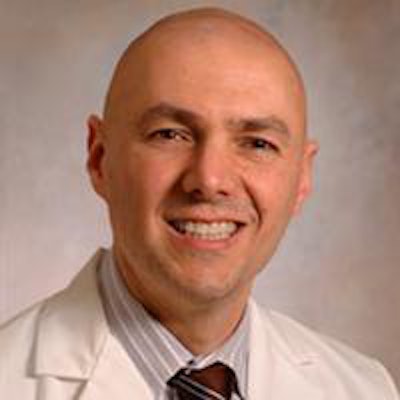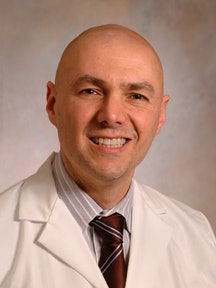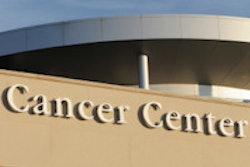
DrBicuspid.com is pleased to present the next installment of Leaders in Dentistry, a series of interviews with researchers, practitioners, and opinion leaders who are influencing the practice of dentistry.
We spoke with Ezra Cohen, MD, an associate professor of medicine and the co-director of the head and neck cancer program at the University of Chicago, and the associate director for education at the university's Comprehensive Cancer Center. Dr. Cohen specializes in head and neck, thyroid, and salivary gland cancers, and is an expert in novel cancer therapies who has conducted extensive research in molecularly targeted agents in the treatment of these cancers.
His research interests include discovering how cancers become resistant to existing treatments and overcoming these mechanisms and ways to combine radiotherapy with novel agents. Here Dr. Cohen discusses trends in the incidence, detection, and treatment of oral and head and neck cancers.
DrBicuspid.com: What's the significance of your recent finding that there may be five distinct subgroups of the human papillomavirus (HPV)?
Dr. Cohen: The purpose of the research was trying to define molecular subgroups of head and neck cancer (HNC) to inform therapy and outcomes a lot more than we do now as defined by stage and anatomic site. We were taking advantage of a cohort of patients that we treated in a similar fashion at the University of Chicago with a chemotherapy regimen that we commonly use here. The patients had tumors banked and the specimens were carefully clinically annotated, so we had information on response, outcome, and toxicity.
 Ezra Cohen, MD, University of Chicago.
Ezra Cohen, MD, University of Chicago.
Because many of these patients had participated in clinical trials, we could draw upon all this clinical data and begin to coordinate the data with molecular profiling. We noticed that five subgroups served the classification best. If we went to more subgroups, it did not help to differentiate the patients with respect to outcome; if we went to fewer subgroups, we were leaving out important categories.
What really made us stop and realize that this was real was that HPV-positive patients and HPV-negative patients segregated into their own groups quite nicely. We of course validated the entire algorithm on different datasets, and we showed that, indeed, on other datasets the five subgroups still held and the outcomes were still different between those subgroups. So we felt reassured that this wasn't just a spurious finding based on a limited number of samples and limited datasets, that these subgroups are real.
When we looked at specific genes or groups of genes that made up the subgroups, we were then able to see some very important patterns. The predominantly HPV-negative subgroup looked like they classified into one that was driven by hypoxia, one that was driven by stem cell or mesenchymal type of features that we are calling basal, and one that was driven by cell cycle or epidermal growth factor receptor (EGFR)-related genes that we are calling the classical HNC.
HPV positives segregated primarily into two subgroups: one that appeared to express a lot of immune-related genes and one that was actually similar to the basal HPV-negative group. What is interesting is that the latter HPV group actually did worse and was closer in terms of outcome to the basal subgroup in the predominantly HPV-negative group. We have known that obviously not all HPV-positive patients do well. So maybe here is a classifier that we can apply prospectively to begin to segregate patients into groups of those that will do well and those that may be amenable to specific therapies such as EGFR inhibitions, hypoxia modulations, or immune modulation, depending on the subgroup.
A report published in January in the Journal of the National Cancer Institute noted that the rate of HPV-related oropharyngeal cancers is rising, but there is no etiological data on what's causing the increase. What do you think is causing the increase?
We are still trying to figure that out, but there are some things we can be confident about and some things we have to surmise. We can be confident that the number of HPV-positive and tobacco-unrelated cancer patients are definitely increasing. Also, no doubt these are sexually transmitted entities and that HPV oropharynx cancer is a sexually transmitted disease. The epidemiology strongly favors that and there likely is an immune-host component to this -- the ability to eliminate the virus completely versus allowing the virus to integrate into DNA. What we do not know is why. Why are we seeing an increase in the incidence? Why do people not clear the virus? And in the subgroup of those patients, do they eventually develop cancer?
There is a parallel with oral herpes infections and the rise of HPV oropharynx cancer. There is a parallel with a change in sexual practices to more oral sexual activity versus other forms of sexual activity. And there is a parallel to a younger age of sexual activity where, because of concerns about contraception and sexually transmitted diseases, oral sexual activity may be preferred in younger individuals versus older people who are having sex to conceive.
Those may be demographic factors that are beginning to favor the emergence of HPV-positive cases. And, of course, these are things that have been going on for decades, not just now, because the virus takes 20 to 30 years to produce cancer. These are exposures that happened 20 years ago. They are trends that would parallel what we are seeing in terms of hosts that are not clearing the virus.
There may be modulating factors. We know that males are more likely to harbor the infection than females and that males have a much higher incidence -- a 3-to-1 ratio -- of HPV-related oropharynx cancer than females. There may be something hormone-related or differences in the immune systems that somehow protects females from developing oropharynx cancer. There may be an interaction with smoking, and some have cited an interaction with marijuana and the development of this cancer. How those may play a role in the ability of the immune system to clear this virus we still have to elucidate. But clearly there are host factors that in some individuals do not allow clearance of this virus, and we do not understand those completely.
Are you seeing more HNC and oral cancer cases in your facility? If so, why?
We are definitely seeing more oropharynx cancers. It could be a combination of factors. We are a tertiary care center that has an interest in HNC and the numbers are truly rising. We are seeing more young patients with tongue cancer who do not have the typical risk factors. That is a disease that worries us quite a bit, not only because we really cannot explain the biology, but our data indicate these patients have worse outcomes.
Researchers have found that parts of the genome are missing in cancer patients. Has there been any information related to oral cancer patients? A recent study of head and neck cancer patients showed that in one patient, 5,000 genes had at least one mutation, and 1,300 had at least two. But the researchers said most were "passengers" -- that is, mutations alongside another mutation that acts as a "driver." What do you think is the significance of these findings?
Without doubt it is true. When we sequence cancers, including oral and HNC, we can see a lot of mutations. The challenge is trying to figure out which ones are important. We call those drivers because they affect the biology of the cancer. So the presumption is if you inhibit a driver, you will have a therapeutic effect on the cancer. If you modify a passenger, you are unlikely to see a therapeutic benefit.
It is certainly true in oral and HNC. We think one gene that is commonly mutated in tobacco-related HNC is p53. We think that is an important gene in the biology of these cancers because it is a common mutation in 50% to 60% of these cancers, and because it is a gene that affects so many critical pathways in the carcinogenic process. It tends to happen very early; even before cancers develop, we see evidence of p53 mutations. That is an example of a gene we think is indeed a driver. On the other hand, there are mutations in many other genes, but we are just not sure how important they are.
What is the greatest challenge in successfully treating head and neck cancers?
Head and neck cancer is an important disease in the way we view cancer and our approaches to it because of two factors. It is a disease in which in a majority of patients we are at least going to consider curative therapy. That does not apply to lung, pancreatic, esophageal cancer, and most cancers that we treat.
The other thing is if you think about what defines us as human beings, especially social animals, so much of it occurs above the clavicle. They involve structures that are profoundly affected not only by the disease but by the treatment. So when you think about it in that context, HNC becomes a cancer that most affects quality of life and that has the greatest financial and social implications of any cancer we know of. So choosing the appropriate therapy on an individual basis for HNC really becomes critical. I cannot overemphasize that. This is a cancer in which the patient has to be cognizant of where they are going for treatment, what type of treatment they will get, and the experience of the center because cure and function are at stake.
A study compared outcomes in patients treated in multidisciplinary centers and with collaboration prior to therapy, and the differences were dramatic. There is evidence that outcomes are better. I think it is a critical component. Not just having multidisciplinary conferences -- the content of the conference is important, but one surrogate of that is likely the experience of the center. A radiation oncologist, medical oncologist, and surgeon who treat five of these a year is likely to be much different than somebody who treats hundreds of these a year.
Where do you think we will see the next big breakthrough for oral cancer, in treatment or prevention?
I think the next wave of breakthroughs will be predicated on what we are learning in the molecular biology of this disease. That will lead to the development of agents specifically for HNC and the molecular alterations, which will lead to better patient selection for therapies and, ultimately, better outcomes. But screening and prevention are critical, especially for oral cancer because this is a disease we should be able to screen for quite readily. For cancers of the oropharynx, hypopharynx, and larynx, those are a little bit more difficult to screen for, but for oral cancer, screening and prevention are very important.
There are also ongoing efforts for different compounds that hopefully try to prevent a second cancer from developing or a preneoplastic lesion from turning into a cancer. Nothing has been approved yet, but there are a lot of efforts going on around the country.
What role can dental professionals play in improving the detection of oral cancer?
It is the hygienist who often spends more time with patients, so we have to train those individuals, as well as primary care physicians, to implement oral cancer screening. But clearly the dental office is a key component, and it really should be the individual that spends the most time with a patient, and for most practices that is probably the hygienist.
What kinds of research are you doing now?
Research naturally flows out of the classification. We are developing protocols specifically for HP- positive versus HPV-negative patients. We will look at this classification in a prospective manner to see if it is validated. We are of course integrating novel agents based on what we understand about the molecular biology. We feel very strongly that the PI3 kinase is an important pathway in many cancers, and we think it is a very important pathway in HPV-positive cancers. We are developing and have ongoing clinical trials that specifically target that pathway to see if indeed these agents will be effective.
We also have a large chemoprevention effort using an approach that was developed at the University of Chicago to inhibit early blood vessel growth in preneoplastic lesions using the drug vandetanib, which is commercially available. We are very encouraged by the preclinical data, and hopefully we'll have something to offer patients to actually prevent the cancer from occurring in the first place.



















